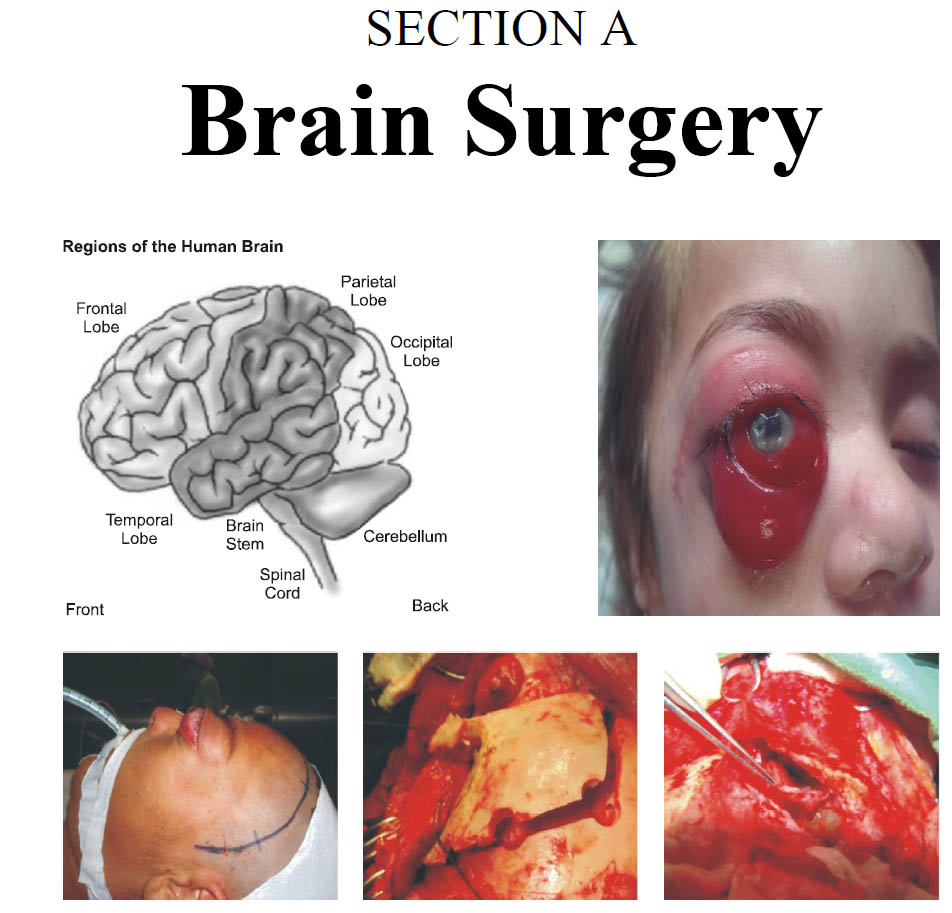Outcome Comparison of Endoscopic (Endonasal Trans-Sphenoidal) Repairs of CSS Leak vs. Transcranial Approach
DOI:
https://doi.org/10.36552/pjns.v25i1.527Keywords:
Cerebrospinal Fluid Leak, Rhinorrhea, Tran-sphenoidal, Endo nasal repair, Trans-cranial approachAbstract
Objective: To compare the effectiveness of Endoscopic (Endonasal transsphenoidal) repair of CSF leak with transcranial approach in terms of post-operative complications like infection, recurrence and hospital stay.
Material and Methods: The comparative experimental randomized study was conducted in the Department of Neurosurgery Unit I, PGMI, Lahore General Hospital, Lahore. After approval from ethical committee this study was carried out in our unit. 40 subjects with the history of CSF leak were randomly divided into two groups; one was treated with endonasal trans-sphenoidal repair and another was treated with trans-cranial approach, the subjects were followed up for 1 year. Detailed history, neurological examination, preoperative CT and MRI scans were performed in all patients.
Results: The mean age of patients with CSF leak was 25.58 ± 14.38 years. Among the patients, 17 were females and 23 were male. The mean age of the female was 31.70 ± 14.29 years. The mean age of the male was 21.04 ± 12.95. The recurrence was observed in 2 (10%) of the patients treated with endoscopic technique and 1 (5%) of the patients treated with trans-cranial approach. Those patients were successfully repaired in a second operation. Overall success rate was 92.5%. One patient (2.50%) among the trans-cranial approach develops infection which was treated successfully.
Conclusion: The endoscopic repair of CSF leak is both safe and effective and should be considered as the standard procedure of choice in most of the cases.
References
2. Warnecke A, Averbeck T, Wurster U, Harmening M, Lenarz T, Stöver T. Diagnostic relevance of ?2-transferrin for the detection of cerebrospinal fluid fistulas. Archives of Otolaryngology–Head & Neck Surgery, 2004; 130 (10): 1178-84.
3. Roy AK. Book Review: The Greenberg Rapid Review: A Companion to the 8th Edition. Oxford University Press; 2017.
4. Mathias T, Levy J, Fatakia A, McCoul ED. Contemporary Approach to the Diagnosis and Management of Cerebrospinal Fluid Rhinorrhea. Ochsner J. 2016; 16 (2): 136-42.
5. Landreneau FE, Mickey B, Coimbra C. Surgical treatment of cerebrospinal fluid fistulae involving lateral extension of the sphenoid sinus. Neurosurgery, 1998; 42 (5): 1101-4.
6. Lanza DC, O'Brien DA, Kennedy DW. Endoscopic repair of cerebrospinal fluid fistulae and encephaloceles. The Laryngoscope, 1996; 106 (9): 1119-25.
7. Daroff RB, Fenichel GM, Jankovic J, Mazziotta JC. Neurology in clinical practice: Elsevier Health Sciences; 2012.
8. Jho H-D, Carrau RL. Endoscopic endonasal transsphenoidal surgery: experience with 50 patients. Neurosurgical Focus, 1996; 1 (1): E4.
9. Chow S-C, Chang M, Pong A. Statistical Consideration of Adaptive Methods in Clinical Development. Journal of biopharmaceutical statistics, 2005; 15: 575-91.
10. Hegazy HM, Carrau RL, Snyderman CH, Kassam A, Zweig J. Transnasal endoscopic repair of cerebrospinal fluid rhinorrhea: a meta?analysis. The Laryngoscope, 2000; 110 (7): 1166-72.
11. Anand VK, Murali RK, Glasgold M. Surgical decisions in the management of cerebrospinal fluid rhinorrhoea. Rhinology, 1995; 33 (4): 212.
12. Burns JA, Dodson EE, Gross CW. Transnasal endoscopic repair of cranionasal fistulae: a refined technique with long?term follow?up. The Laryngoscope, 1996; 106 (9): 1080-3.
13. Hughes R, Jones N, Robertson I. The endoscopic treatment of cerebrospinal fluid rhinorrhoea: the Nottingham experience. The Journal of Laryngology & Otology, 1997; 111 (2): 125-8.
14. Casiano RR, Jassir D. Endoscopic cerebrospinal fluid rhinorrhea repair: is a lumbar drain necessary? Otolaryngology – Head and Neck Surgery, 1999; 121 (6): 745-50.
15. smaija ms. To Determine Frequency of Cerebrospinal Fluid (CSF) Rhinorrohea after Trans-sphenoidal (TSS) Surgery, 2016;. 2016: Epub 2016-04-11.
16. Giovannetti F, Ruggeri A, Buonaccorsi S, Pichierri A, Valentini V. Endoscopic endonasal approaches for cerebrospinal fluid leaks repair. Journal of Craniofacial Surgery, 2013; 24 (2): 548-53.
17. Lloyd M, Kimber P, Burrows E. Post-traumatic cerebrospinal fluid rhinorrhoea: modern high-definition computed tomography is all that is required for the effective demonstration of the site of leakage. Clinical Radiology, 1994; 49 (2): 100-3.
18. Paul P, Upadhyay K. Endoscopic endonasal repair of traumatic CSF rhinorrhoea. Indian Journal of Neurotrauma, 2010; 7 (01): 67-9.
19. Dodson EE, Gross CW, Swerdloff JL, Gustafson LM. Transnasal endoscopic repair of cerebrospinal fluid rhinorrhea and skull base defects: a review of twenty-nine cases. Otolaryngology — Head and Neck Surgery, 1994; 111 (5): 600-5.
20. Kelley TF, Stankiewicz JA, Chow JM, Origitano TC, Shea J. Endoscopic closure of postsurgical anterior cranial fossa cerebrospinal fluid leaks. Neurosurgery, 1996; 39 (4): 743-6.
21. Tomazic PV, Stammberger H. Spontaneous CSF-leaks and meningoencephaloceles in sphenoid sinus by persisting Sternberg's canal. Rhinology, 2009; 47 (4): 369.
22. Hadad G, Bassagasteguy L, Carrau RL, Mataza JC, Kassam A, Snyderman CH, et al. A novel reconstructive technique after endoscopic expanded endonasal approaches: vascular pedicle nasoseptal flap. The Laryngoscope, 2006; 116 (10): 1882-6.
23. Sautter NB, Batra PS, Citardi MJ. Endoscopic management of sphenoid sinus cerebrospinal fluid leaks. Annals of Otology, Rhinology & Laryngology, 2008; 117 (1): 32-9

Downloads
Published
Issue
Section
License
The work published by PJNS is licensed under a Creative Commons Attribution-NonCommercial 4.0 International (CC BY-NC 4.0). Copyrights on any open access article published by Pakistan Journal of Neurological Surgery are retained by the author(s).












